- Pedestrian and Cyclist Priorities
- 1. PUFIN (Spelt slightly wrong - 1 F instead of 2)
- [[#1. PUFIN (Spelt slightly wrong - 1 F instead of 2)#How does it look?|How does it look?]]
- [[#1. PUFIN (Spelt slightly wrong - 1 F instead of 2)#How does it work?|How does it work?]]
- [[#How does it work?#Features for Visually Impaired People|Features for Visually Impaired People]]
- [[#How does it work?#Traffic Light Sequence|Traffic Light Sequence]]
- 2. PELICON Crossing (spelt slightly wrong)
- [[#2. PELICON Crossing (spelt slightly wrong)#How does it look?|How does it look?]]
- [[#How does it look?#Rules:|Rules:]]
- [[#How does it look?#Traffic Light Sequence|Traffic Light Sequence]]
- 3. Toucan Crossing (Two-can)
- [[#3. Toucan Crossing (Two-can)#How does it look?|How does it look?]]
- [[#How does it look?#Traffic Light Sequence|Traffic Light Sequence]]
- 4. Equestrian Crossing (aka Pegasus Crossing / Horse Crossing)
- [[#4. Equestrian Crossing (aka Pegasus Crossing / Horse Crossing)#How does it look?|How does it look?]]
- [[#How does it look?#Black and White Stripes | Belisha Beacon|Black and White Stripes | Belisha Beacon]]
- 5. Parallel Crossing (Incorrectly named Tiger Crossings)
- 6. Belisha Beacon
- 7. Zig-Zag Lines
- [[#7. Zig-Zag Lines#How do they look?|How do they look?]]
- [[#7. Zig-Zag Lines#Rules|Rules]]
- Summary
| Previous | Next |
|---|---|
| 04 International Speed Limits | 06 Hazards |
Pedestrian and Cyclist Priorities
Drivers must give way to pedestrians and cyclists who are crossing or waiting to cross the road at:
- Zebra crossings
- Parallel crossings
- Roads
1. PUFIN (Spelt slightly wrong - 1 F instead of 2)
PUFIN stands for:
- Pedestrian
- User
- Friendly
- INterface
Features:
- INTELLIGENT CROSSING WITH SENSORS
- Only stops traffic for as long as necessary
- Can cancel requests if it detects the pedestrian has walked away
How does it look?
| How does it look? | Sensor Placement |
|---|---|
| - Sensor on top of traffic light - Sensors on the road | |
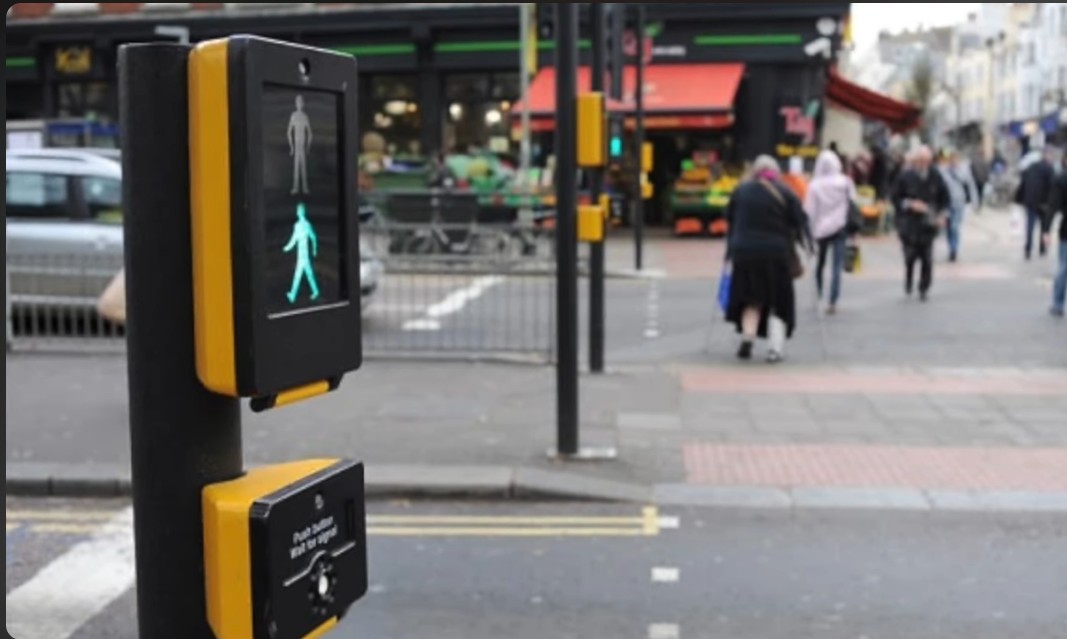 |  |
Zig-Zag marking: (see description at the end of the page)
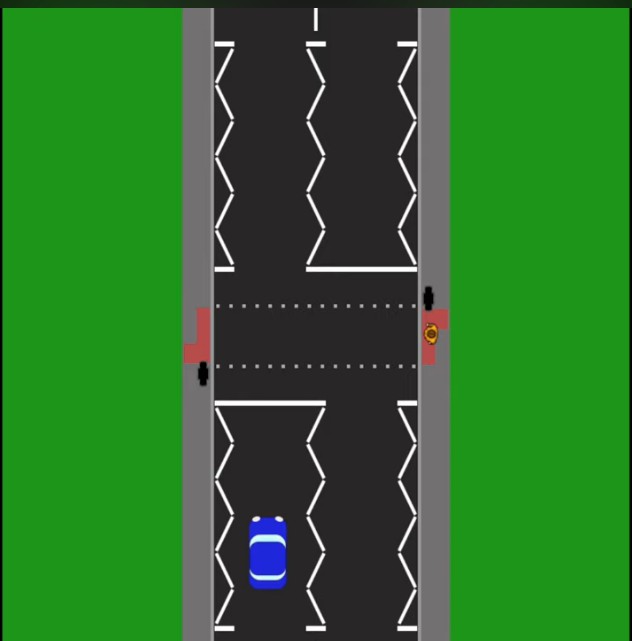
How does it work?
- When the button is pressed, sensors activate to detect the presence of vehicles.
- If a vehicle is detected, the system allows it to pass before changing the light; otherwise, the light may change immediately.
- The sensors regulate the duration of the red light for vehicles, ensuring it remains lit until all pedestrians have safely crossed.
Features for Visually Impaired People
- 🟩 Green light: Cone rotates (safe to cross)
- 🟥 Red light: Cone does not rotate
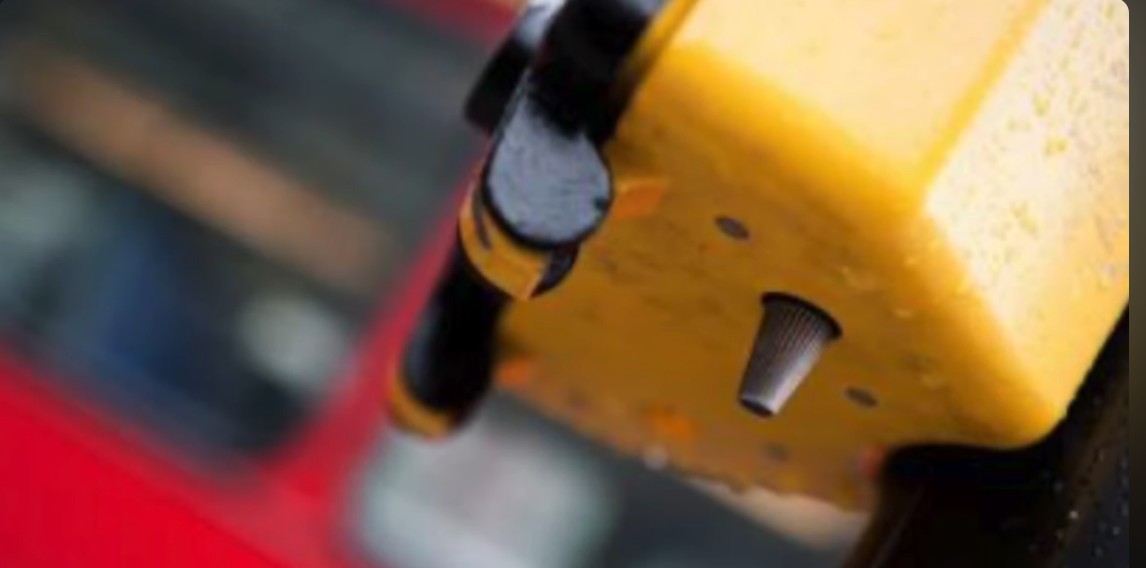
Traffic Light Sequence
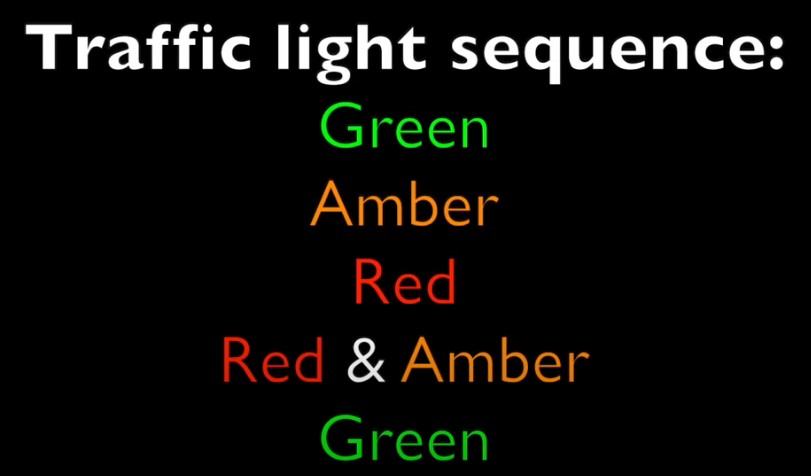
2. PELICON Crossing (spelt slightly wrong)
PELICON stands for:
- PEdestrian
- LIght
- CONtrolled
Major Differences from PUFIN:
- Not intelligent like PUFIN
- Features a flashing amber light
You might need to wait for 6 to 7 seconds before the light changes, regardless of whether there is a car approaching or not.
How does it look?
On one side, there is a button; on the opposite side, there is a traffic light.
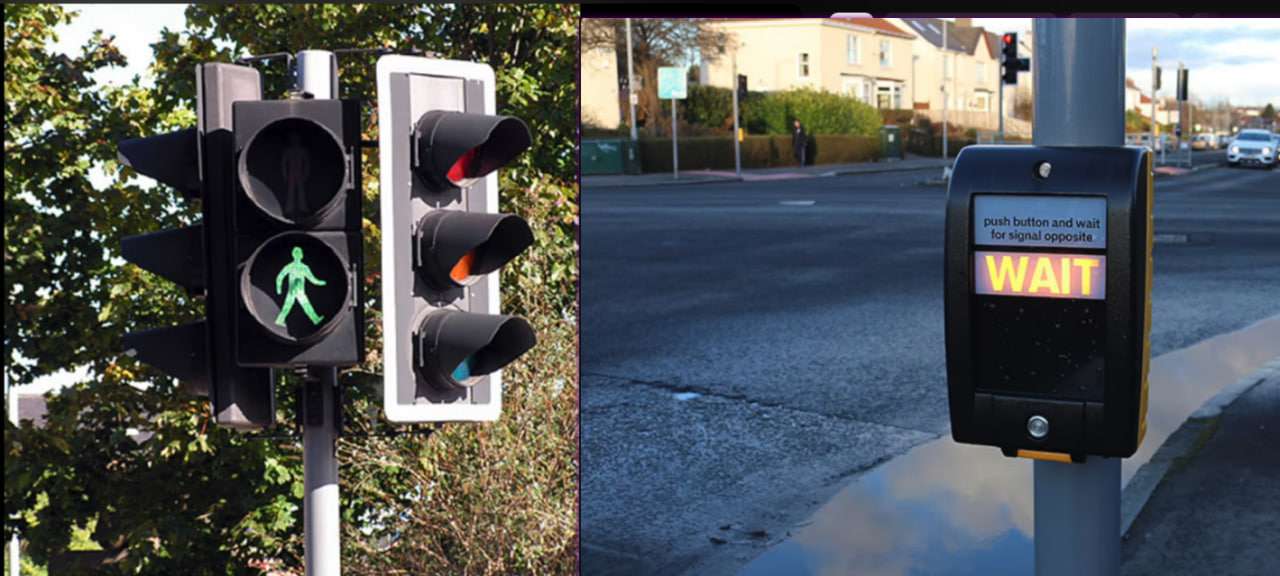
Rules:
- Flashing amber means allow pedestrians to finish crossing.
- No pedestrians on the crossing: No need to wait for green (you can go when the traffic light is amber).

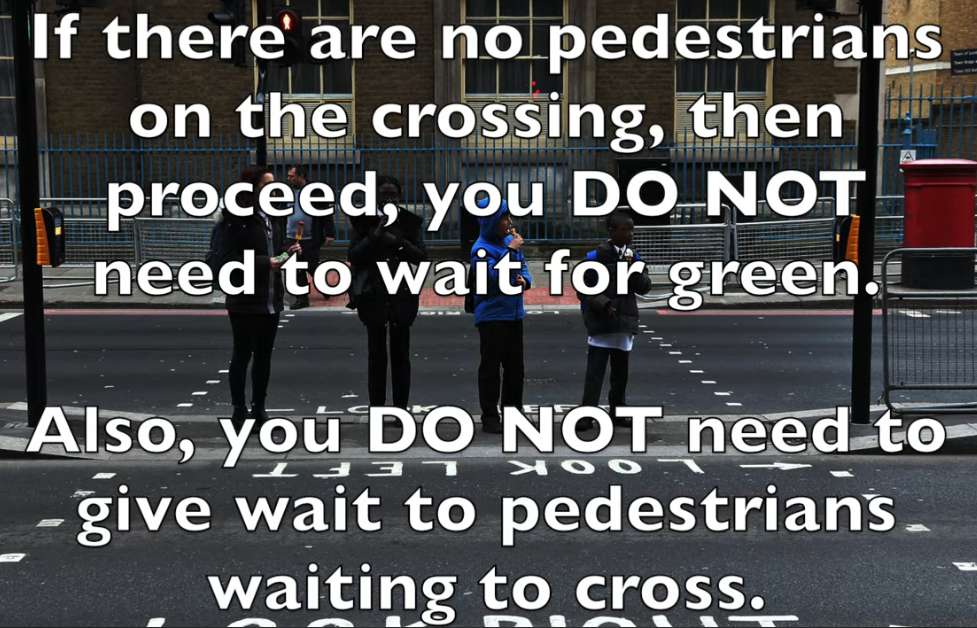
Traffic Light Sequence
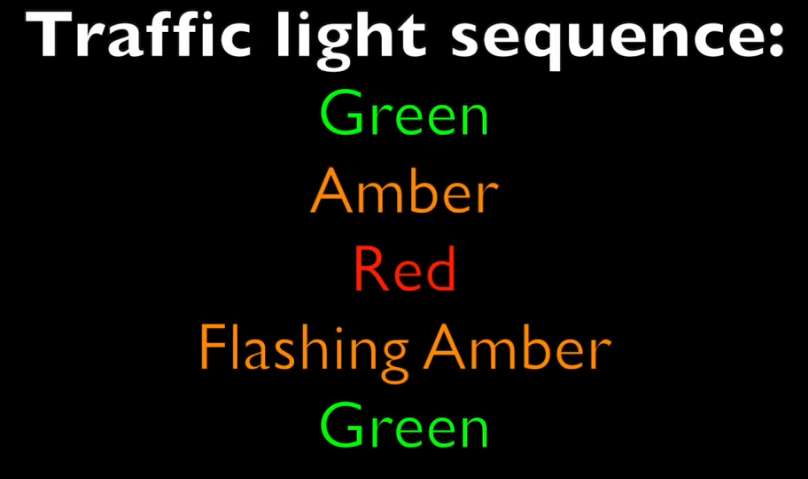
3. Toucan Crossing (Two-can)
Toucan stands for:
- Two can cross (Pedestrians & Cyclists)
How does it look?

Traffic Light Sequence

4. Equestrian Crossing (aka Pegasus Crossing / Horse Crossing)
How does it look?

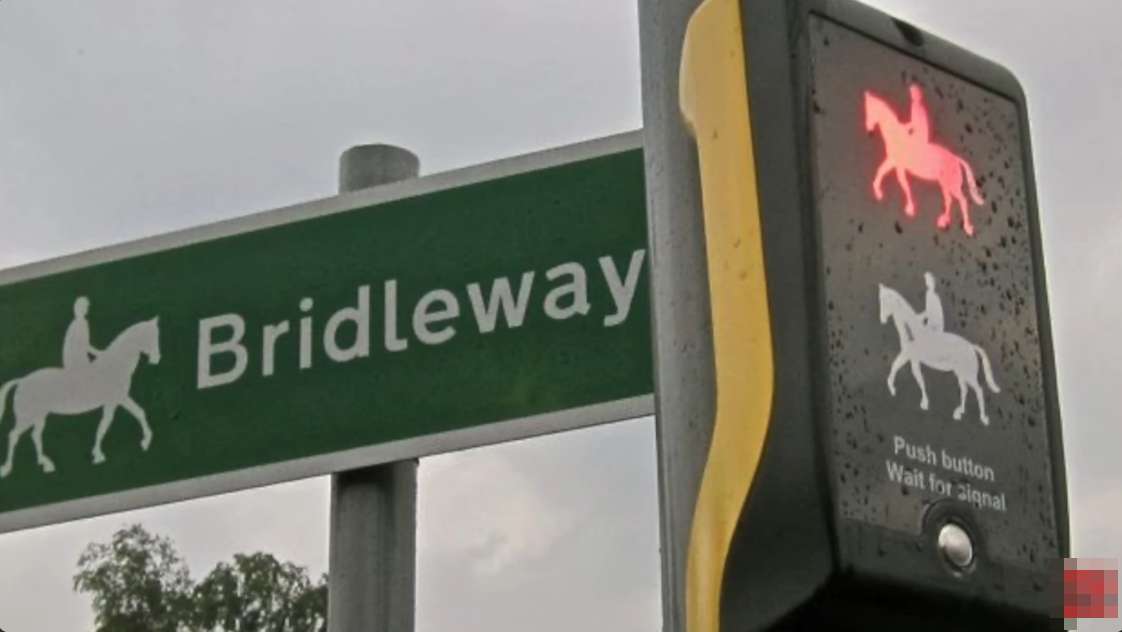
- Pedestrian level
- Horse rider level
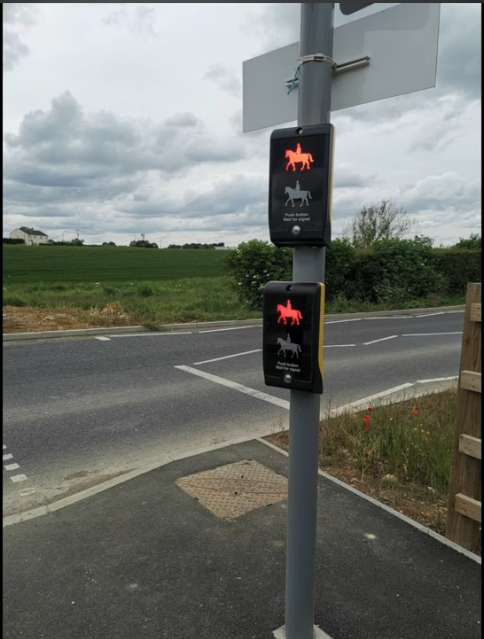
Black and White Stripes | Belisha Beacon
- Flashing amber light means give way to pedestrians.
- Dotted white line means you MUST give way to pedestrians who are:
- Already crossing
- Looking to cross the road

5. Parallel Crossing (Incorrectly named Tiger Crossings)
A parallel crossing is a combined pedestrian and cycle crossing with a priority cycleway, first introduced in the UK in 2015.
6. Belisha Beacon
A Belisha beacon is an amber-coloured globe lamp atop a tall black and white striped pole, marking pedestrian crossings in the United Kingdom, Ireland, and other countries historically influenced by Britain, such as Hong Kong, Malta, and Singapore. The beacons were named after Leslie Hore-Belisha (1893–1957), the Minister of Transport who, in 1934, added beacons to pedestrian crossings, marked by large metal studs in the road surface. These crossings were later painted in black and white stripes and are known as zebra crossings. Legally, pedestrians have priority over vehicles on such crossings.
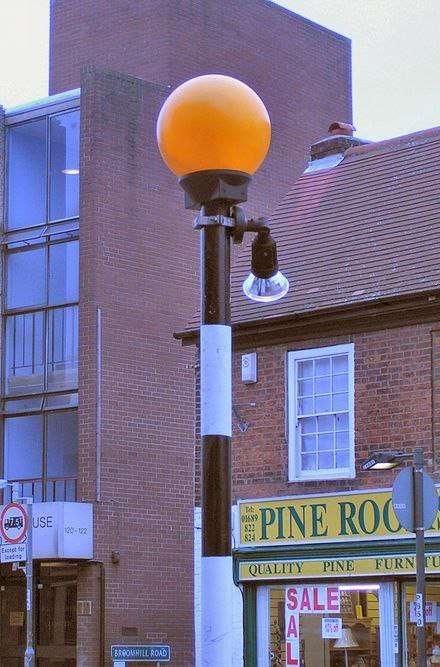
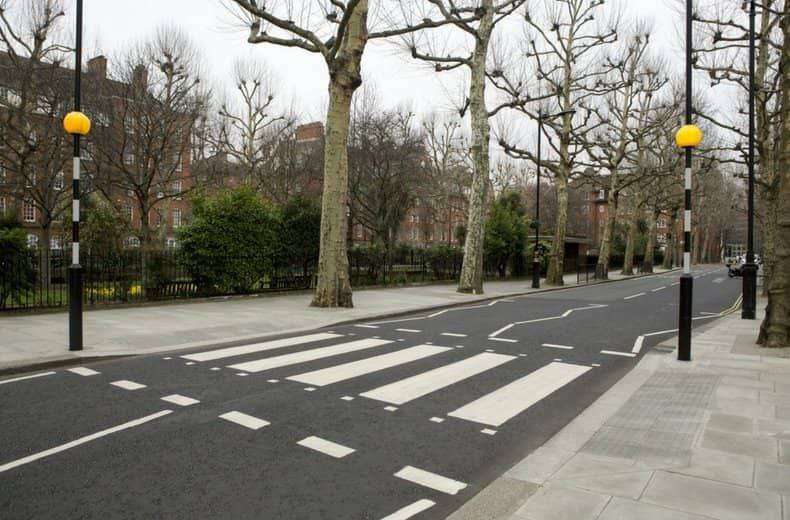
7. Zig-Zag Lines
How do they look?
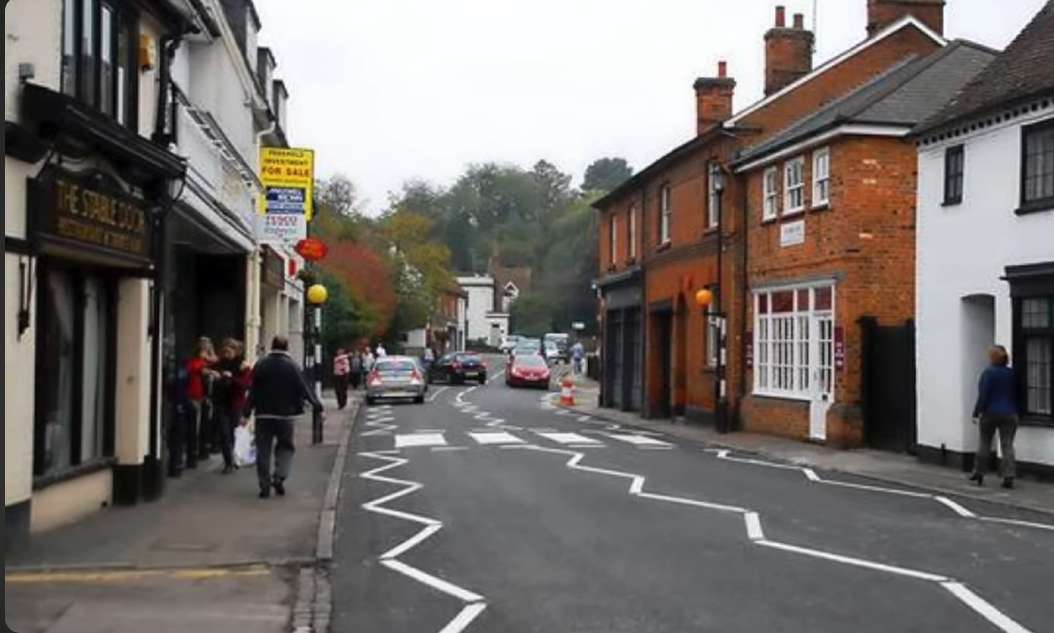
Rules
- You MUST NOT park 🚫🅿️
- You MUST NOT overtake🚫🚔🚘
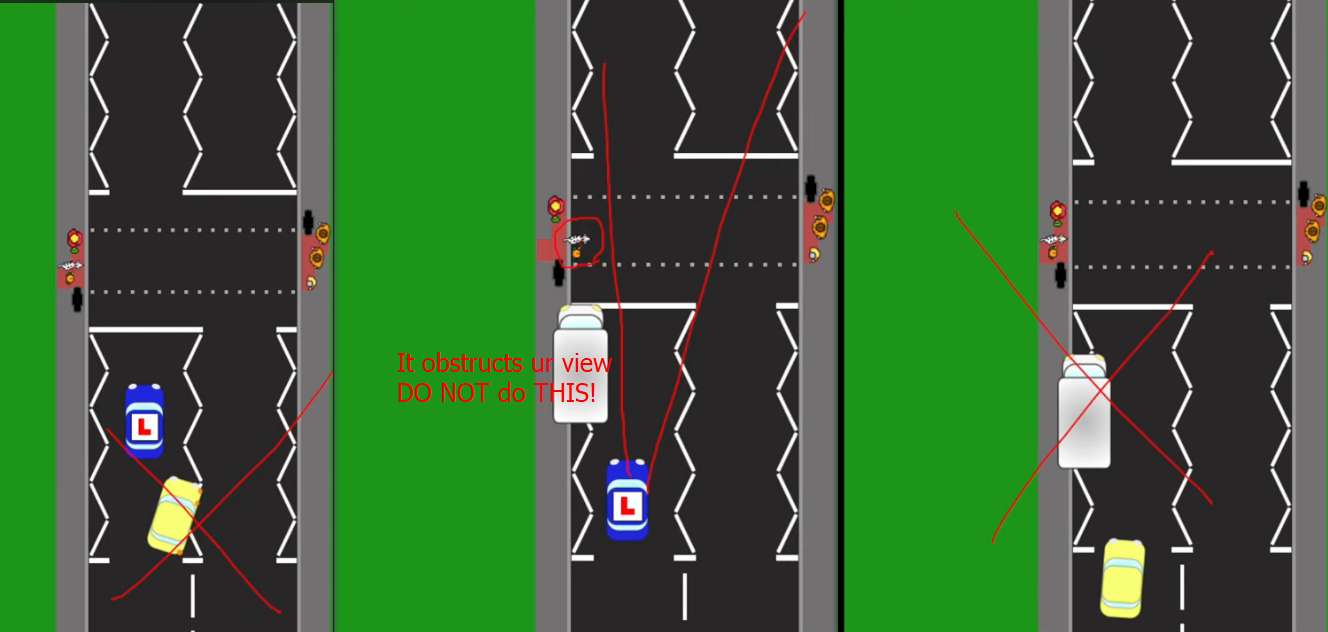

You can use hand signals to indicate slowing down (“slow down and do not overtake me - I am giving way to a pedestrian”).
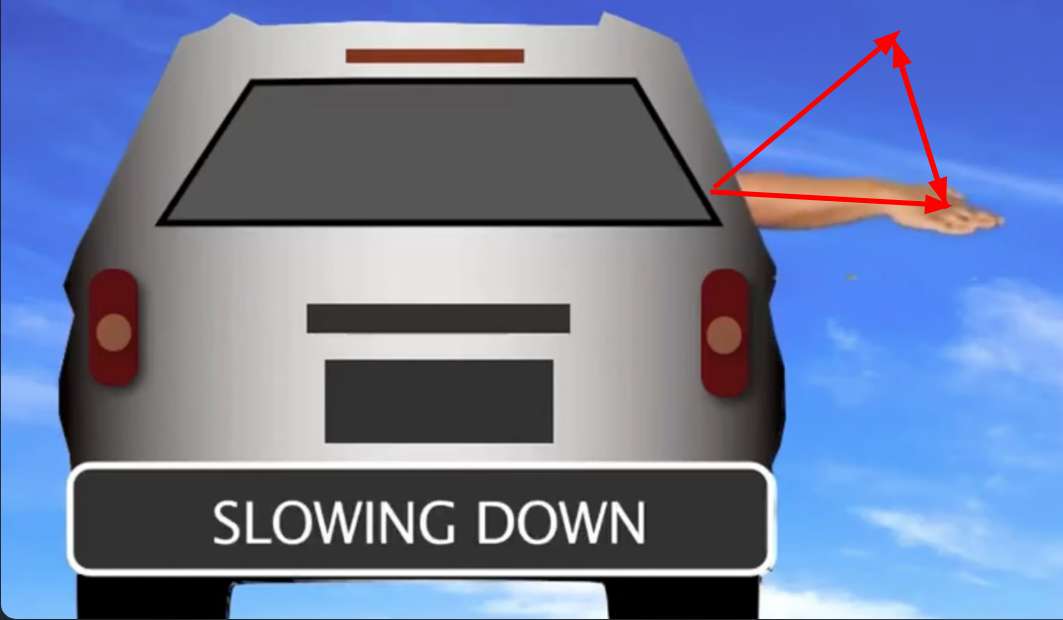
Summary
| Feature | PUFFIN Crossing | PELICAN Crossing | Toucan Crossing | Equestrian Crossing | Parallel Crossing |
|---|---|---|---|---|---|
| Name Meaning | Pedestrian User-Friendly Intelligent | Pedestrian Light Controlled | Two-can cross (Pedestrians & Cyclists) | Pegasus/Horse Crossing | Combined pedestrian and cycle crossing |
| Intelligent Crossing | ✅ | ❌ | ❌ | ❌ | ❌ |
| Sensors | ✅ | ❌ | ❌ | ❌ | ❌ |
| Traffic Light with Button | ✅ | ✅ | ✅ | ✅ | ❌ |
| Flashing Amber Light | ❌ | ✅ | ❌ | ❌ | ❌ |
| Allow Cyclists | ❌ | ❌ | ✅ | ❌ | ✅ |
| Allow Horse Riders | ❌ | ❌ | ❌ | ✅ | ❌ |
| Pedestrian Priority | ✅ | ✅ | ✅ | ✅ | ✅ |
| Adjustable Red Light Duration | ✅ | ❌ | ❌ | ❌ | ❌ |
| Traffic Light Sequence | Adjusts to presence and duration of pedestrian | Fixed sequence with flashing amber light | Fixed sequence | Fixed sequence | Fixed sequence |
| Features for Visually Impaired | ✅ Rotating cone on green light | ❌ | ❌ | ❌ | ❌ |
| Sensor Placement | On top of traffic light and on the road | ❌ | ❌ | ❌ | ❌ |
| Previous | Next |
|---|---|
| 04 International Speed Limits | 06 Hazards |